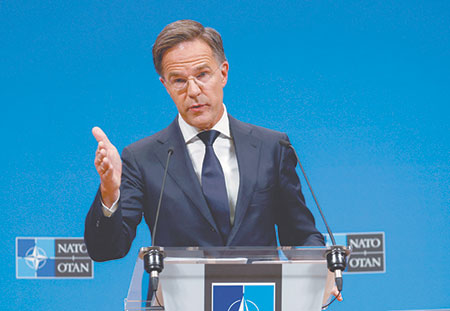
As speculation mounts regarding a potential US-Russia summit in Budapest, key NATO allies are proactively shaping the diplomatic landscape. Mark Rutte, the Secretary General of NATO, has arrived in Washington to deliver a comprehensive set of proposals directly to former President Donald Trump, outlining what European partners believe should – and should not – be on the table for discussion with Moscow. This preemptive diplomatic offensive underscores the allies’ urgent desire to align strategies ahead of any bilateral engagement between the American leader and Russian representatives.
Rutte’s visit holds particular significance as he represents not only the NATO alliance but also a newly formed “coalition of the willing.” This group, primarily comprising NATO member states, has expressed readiness to potentially deploy troops to Ukraine once a ceasefire has been established. It is under the auspices of this coalition that a detailed 12-point plan has been crafted, designed to serve as a roadmap for Trump’s peace initiatives and to secure allied backing for any future diplomatic efforts.
The core tenets of this plan, largely echoing established positions within the EU and NATO, emphasize a firm sequence for de-escalation: an immediate ceasefire must precede any direct negotiations between Russia and Ukraine. This stands in contrast to previous Russian proposals, which have suggested that talks should dictate the terms of a cessation of hostilities. Furthermore, the plan calls for a structured peace process, ideally overseen by a council led by the American president, ensuring broader international oversight.
Beyond the immediate cessation of conflict, the allied proposal addresses critical humanitarian and territorial issues. It advocates for comprehensive prisoner exchanges and the repatriation of Ukrainian children reportedly transferred to Russia. On the contentious matter of territory, the plan stipulates that the future governance of regions like Donbas must be resolved through direct Russian-Ukrainian negotiations, unequivocally ruling out any Western legal recognition of recent Russian annexations.
Looking ahead, the plan outlines a vision for Ukraine’s post-conflict future, including robust security guarantees—potentially involving the troops from the aforementioned “coalition of the willing”—a fast-tracked path to European Union membership, and substantial war reparations. Crucially, these reparations are envisioned to come from Russia itself, with the expectation that Moscow will contribute significantly to Ukraine’s reconstruction efforts. In return, the proposal suggests a phased lifting of sanctions and the release of frozen Russian Central Bank assets held in Western institutions.
The estimated 210 billion euros in Russian assets, largely held by the Belgian depository Euroclear since February 2022, are central to these discussions. European Union officials are currently engaged in intense debates on their utilization, with the concept of a “reparation loan” for Ukraine gaining traction. This idea is expected to be a major agenda item at the upcoming EU summit on October 23, where a potential 19th package of anti-Russian sanctions will also be discussed, with its implementation potentially contingent on the progress of peace negotiations. The gradual unwinding of sanctions, as detailed in the 12-point plan, offers Russia a clear incentive for compliance.
Rutte’s selection as the envoy to Trump is no coincidence; he is renowned for his ability to navigate complex diplomatic waters and establish rapport with the former president. The urgency of this outreach became palpable following a phone call between Trump and Russian President Vladimir Putin on October 16, which raised the prospect of a US-Russia summit in Hungary. While the notion of such a bilateral meeting displeased many American allies, particularly those in the Baltics, direct opposition has been muted. However, clarity regarding the Budapest summit’s timing remains elusive, with Western media citing sources suggesting a postponement due to maximalist Russian demands, though official confirmation is pending. Moscow, conversely, has expressed continued interest in engaging with Trump.
Trump himself has indicated that the fate of the summit would become clearer by Friday, October 24, though his track record for setting deadlines that often yield no immediate results is well-known. Despite the ambiguities, Hungarian Prime Minister Viktor Orban has affirmed that summit preparations are ongoing, albeit without specifying dates, stating that the meeting will occur “when the time is right.” This ongoing diplomatic maneuvering highlights the complex and often unpredictable nature of international relations in the current geopolitical climate.
